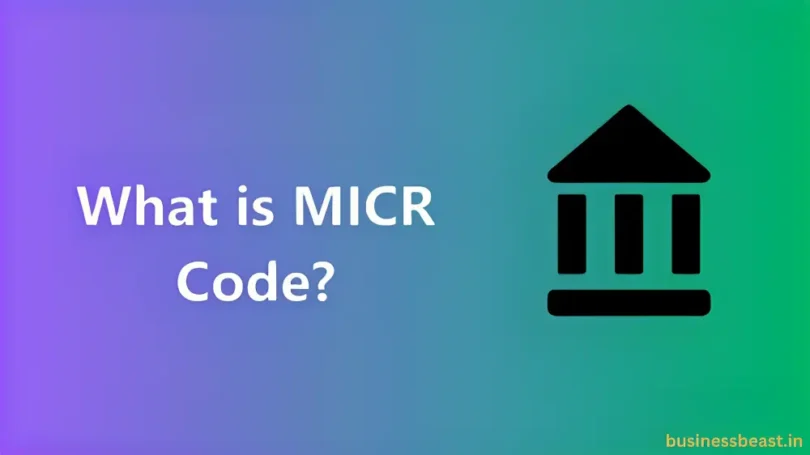This post will explain and examine the function of the MICR code on a check. It is impossible to overestimate the significance of having current and accurate information on a variety of bank papers, including a website, passbook, checkbook, and mobile app. This is because financial transactions usually require these particulars to be completed. For example, an IFSC code is needed to locate a particular bank branch and to transfer money electronically using RTGS, IMPS, or NEFT. In a similar vein, debit cards can be used for ATM, offline, and internet transactions. This post will explain and examine the function of the MICR code on a check.
What is the MICR Code?
The “Magnetic Ink Character Recognition” (MICR) technology quickly and accurately recognizes and processes checks by using a 9-digit code that is placed at the bottom of the check. MICR provides several benefits beyond only speeding up the processing of checks, such as:
- The check’s Magnetic ink character recognition is found at the bottom.
- It contains facts about the account, amount, check number, and bank code, among other information unique to that bank.
- Magnetic ink character recognition Codes are made up of different characters.
- Magnetic ink character recognition Codes are commonly used for cross-border money transactions, in contrast to IFSC codes.
- Because codes have a distinct font and employ magnetic ink, they are difficult to copy.
- Every Indian bank has a unique Magnetic ink character recognition code.
What is the Format of a MICR Code?
An MICR code, which consists of nine digits, is utilized to identify banks and branches that are affiliated with the Electronic Clearing System (ECS). The three groups of digits in the code represent different bank information.
- The city code is represented by the first three digits of the code.
- The bank code is represented by the middle three numbers.
- The branch code is represented by the last three numbers.
Where Can I Find the MICR Code of the Bank?
There are different ways to find the MICR code of a bank.
- Check the bottom of your bank check: Check the passbook or checkbook provided by the bank. The MICR code is often placed in the lower left corner of a check or passbook.
- Visit the bank website: On their website, the majority of banks provide their Magnetic ink character recognition code. You may look up the MICR code on the bank’s website.
- Contact the bank: The MICR code can be obtained by calling the bank’s customer service center if you are unable to discover it on your check or the bank website.
- Use a MICR code search engine: The bank name, branch location, and other information can be entered into any of the many online MICR code search engines to obtain the MICR code.
Ensuring the MICR code is typed accurately is crucial when completing a check or transferring money. The transaction may be delayed or may be rejected as a result of mistakes or inconsistencies in the MICR code. To prevent any trouble or delay, it is therefore advised to verify the MICR code twice before beginning any transaction.
How Does the MICR Line Work?
Printing Magnetic ink character recognition codes with magnetic ink helps to cut down on duplication and makes it possible for computers to accurately read and decode data from MICR lines, such as account numbers, routing information, and check numbers. In addition to removing duplication, computers can now correctly read characters that would normally be concealed by inks or markings like bank stamps, cancellation marks, signatures, or other markings thanks to the usage of magnetic ink.
Conclusion
The purpose of a bank’s information package, website, and mobile banking application is to record and speed transactions. Both the bank and its customers use these resources. This information is available through several channels, such as websites, banking kits, and mobile apps, to make financial transactions easier to complete.








Leave a Comment